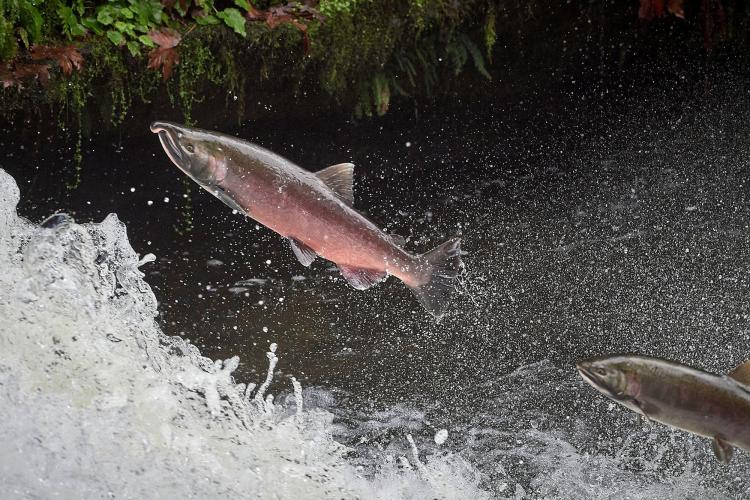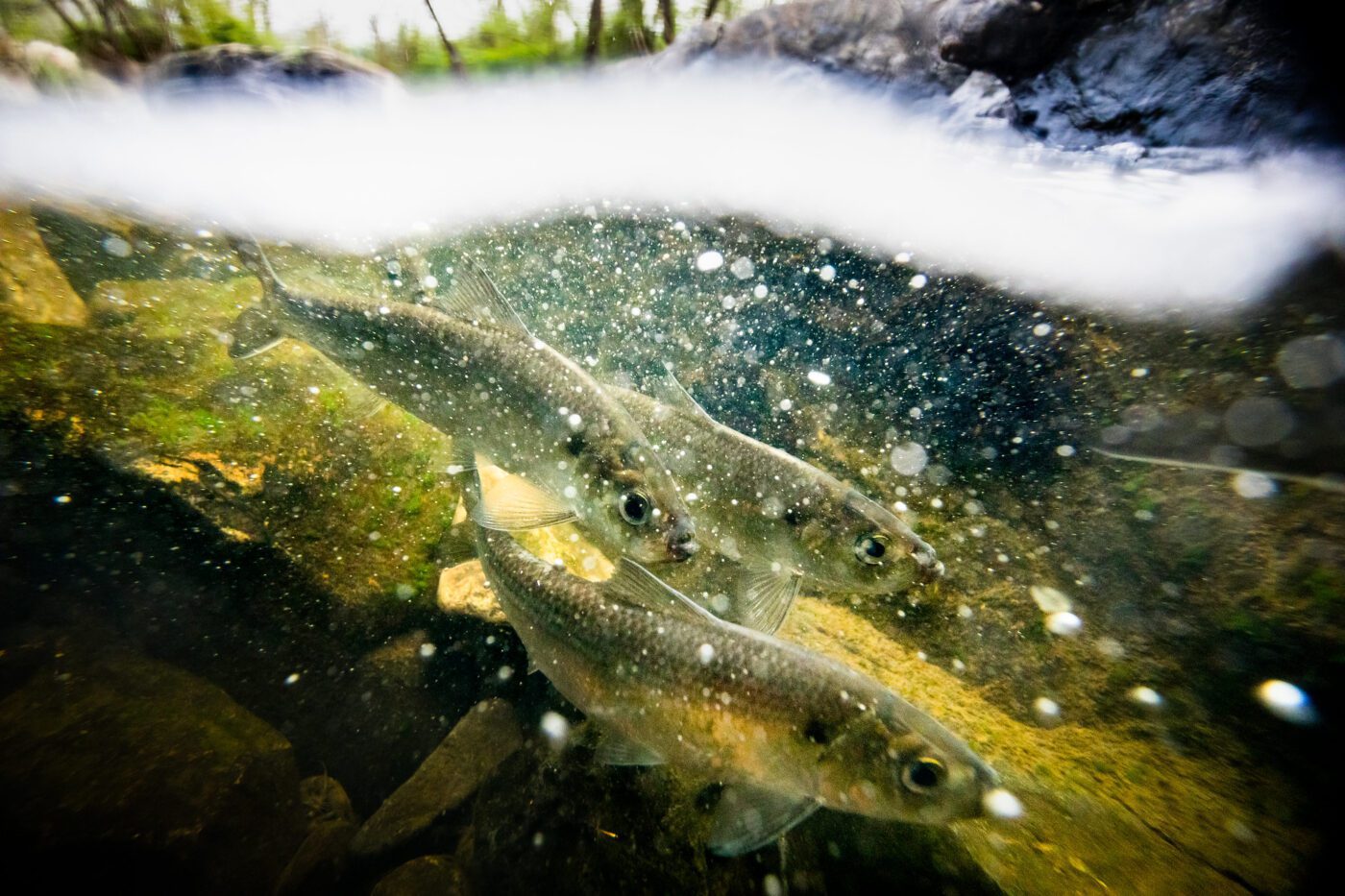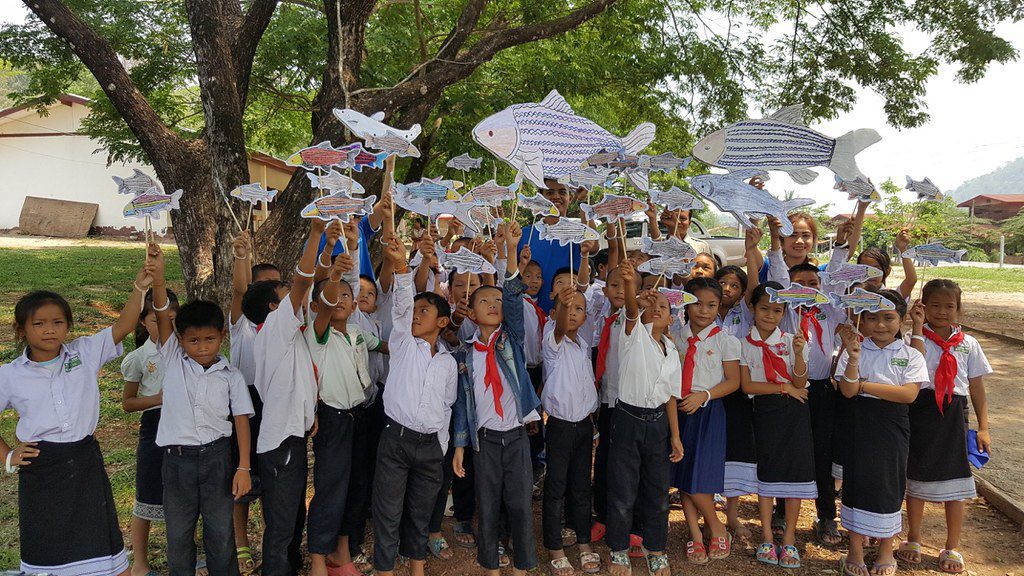Saturday May 25, 2024

Though not as visible as the great migrations of terrestrial animals, many species of fish undertake strenuous journeys covering hundreds or thousands of miles in order to take advantage of seasonal food resources, grow and develop, and spawn. Unfortunately, many important migratory routes for these freshwater wanderers have been impeded by structures like dams. These barricades prevent many species from completing their life histories, often leading to population declines and cascading effects felt throughout aquatic and even adjacent terrestrial ecosystems. In order to raise awareness of the challenges faced by migratory fish, the World Fish Migration foundation created World Fish Migration Day (WFMD). WFMD is celebrated every other year to emphasize the importance of migrating fish and free flowing rivers for humans, other species of animals, and the ecosystem as a whole. Today, May 25th, is the sixth WFMD. Celebrations, informational events, and action campaigns focused on migratory fish are taking place across the globe.

A coho salmon (Oncorhynchus kisutch) on the Washington Coast. Photo by Paul Jeffrey/Wild Salmon Center.
The theme for this year’s WFMD is “free flow.” Free flowing water is defined as waterways that flow without any modifications, rerouting, or other alterations that would disrupt a river’s natural path. Migrating to and from ocean and freshwater habitats in free flowing channels allow fish to obtain access to more nutritious food resources to facilitate growth, escape predators, and find suitable spawning habitat. In recognition of this theme, FISHBIO has been featuring some of the world’s last remaining free-flowing rivers in our weekly Fish Report.

Alewife herring (Alosa pseudoharengus) on their spawning migration in the a tributary of the Chesapeake Bay. Photo by the Chesapeake Bay Program.
Millions of people depend on migratory fish for their food supply and livelihoods. The loss of populations of migratory fish would lead to major economic, cultural, and recreational impacts for people around the world. Inland fisheries, which rely heavily on migratory species, provide on the order of 12 million tons of food for people around the world. Even recreational fisheries alone have recently been estimated to generate a value of nearly $10 billion in food for people worldwide. Additionally, migratory fish are ecologically beneficial to the ecosystems around them. By transporting nutrients across habitats, migratory fish act to connect marine and freshwater food webs and in doing so help to boost the productivity and diversity of aquatic environments.

Chinook salmon (Oncorhynchus tshawytscha) make their way up a fish ladder.
Many migratory fish species are critically endangered or threatened, and are in need of conservation and recovery efforts to ensure their survival into the future. In fact, species of migratory fish are estimated to be nearly twice as likely to become endangered compared with non-migratory species. The severity of this risk is reflected in the United Nations Environment Programme’s State of the World’s Migratory Species report, which found that 97% of migratory fish globally are facing extinction, with freshwater fish being particularly vulnerable due to disturbances in their migration routes. Restoring rivers to their natural, free-flowing state can be crucial in conserving these migratory fish. In the United States alone, more than two million dams, culverts, and other man-made barriers have blocked fish migration upstream. The goal of WFMD is to raise awareness of these barriers and help bring about actions to remove them.
The removal of out-dated and non-functional barriers not only helps migratory fish complete their life cycles, but can also improve the health of the river ecosystem. However, sometimes removal is not always possible or feasible. One alternative for aiding migrating fish in this situation is the construction of facilitated passages over dams. In honor of WFMD, multiple events are taking place to assist fish migration over man-made barriers. For instance, in Maine a dedication ceremony will be held for the new Branch Pond fishway, which will allow river herring (Alosa pseudoharengus) to migrate to Branch Pond in the West Branch Sheepscot River to spawn for the first time in 200 years.

Students in Laos celebrating World Fish Migration Day.
Awareness of the state of migratory fishes and their rivers is the first step in creating change. WFMD is dedicated to promoting commitments from non-governmental organizations (NGOs), governments, and businesses to reestablish natural river flows and reopen historic fish migration routes. Through participating in or advocating for river restoration projects in local communities, everyone can positively contribute to conserving the habitats and wellbeing of migratory fish.
To learn more about some of the Earth’s last remaining free-flowing rivers and their importance to migratory fish, check out our Wild Rivers blog series. Learn more at fishbio.com/category/wild-rivers
